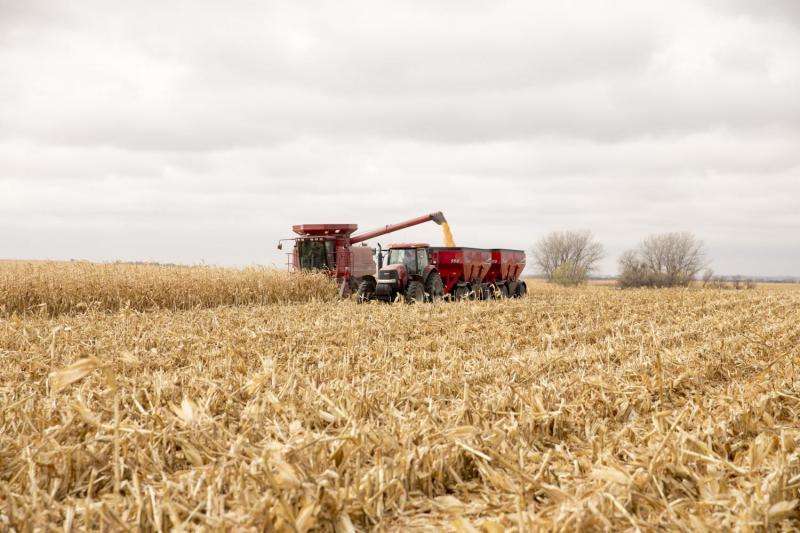Survey probes past and future grassland conversions

Prairie Pothole Region farmers who added converted North and South Dakota grasslands into their cropland base in the past decade report that the new acreage represents a sizable share of their total acreage in 2014.
That was one of the major findings from a survey mailed to producers in spring 2015.
South Dakota State University, North Dakota State University and Iowa State University researchers created the survey to study the impact of farmland-use decisions in the Dakotas. It was completed by 1,026 producers in 57 counties (37 South Dakota, 20 North Dakota).
Among those producers, 40 percent converted at least some grassland to cropland. Within that 40 percent group, they reported that 14 percent of their 2014 cropland acreage was grassland in the past 10 years.
The USDA reports that during the six-year period of 2006-11 cropland enrolled in the Conservation Reserve Program in North and South Dakota decreased from 5.0 million to 3.8 million acres with most of the tracts returned to cropland. This includes all producers, not just those participating in the survey.
In North Dakota, most of the new cropland came from acres leaving the CRP program. South Dakota farmers were more likely to put grasslands into production that had never been enrolled in CRP.
Overall, 14.4 percent of responding farmers that had converted acres into cropland did so with native grasslands; another 16.2 percent said they put tame grasslands into cultivation.
Land-use decisions haven't strictly been in the direction of more tillable land. Among respondents, 14 percent reported converting grassland to cropland as well as cropland to grassland in the past decade. Another 14 percent converted only cropland to grassland.
However, the acreages were much smaller than grassland to cropland (28,000 to 85,000 according to data provided by participants).
Land going back to grass was primarily due to new CRP or Wetland Reserve Program sign-ups (a combined 23.3 percent). Only 7 percent of respondents turned CRP land into grass or hay acres.
Corn, bean acreages increases
As would be expected, 75 percent of responding farmers who converted grass to cropland used the new ground to plant corn or soybeans. There were 30 percent that planted wheat on the new cropland.
Larry Janssen, an ag economics professor at SDSU and one of the survey authors, said that mirrors current producer output.
"Nearly 90 percent of respondent producers raised corn and/or soybeans in the past 10 years. Nearly half of North Dakota respondents raised wheat each year compared to 28 percent of South Dakota respondents. Very few respondents in either state increased their wheat acreage in comparison to other crops," Janssen said.
"Even among those who didn't convert grassland, the majority reported grassland decreases and increased soybean and corn acres within five miles of their farm headquarters," Janssen said.
Change driven by crop prices
Not surprisingly, improving commodity prices was the No. 1 reason for taking land out of grassland. It was listed as the most important factor by 50.3 percent of respondents. Other choices for "most important factor" were changing input prices for seed, fertilizer, chemicals, etc., 15.2 percent; and improved crop yields (10.8 percent).
Highest among a tier of seven lower choices was changing weather/climate (6.9 percent).
The survey, which had a 36 percent response rate, also found that those most likely to have converted grassland were those who:
- expanded their land operation in the past 10 years;
- operate more than 2,000 acres with annual gross farm sales of $500,000 or more; and
- are currently under 50 years of age.
Future to be more stable
As to the future, the study finds in the coming decade that:
- More producers plan to convert cropland to pasture or grassland (12.6 percentage) than those who plan to convert native grassland (2.6 percent) or tame grassland (6.5 percent) to cropland.
- More than two-thirds (68 percent) expect no major changes in grassland acres. A major change was defined as greater than 5 percent. Meanwhile, 26 percent predicted continued decline in grasslands. Six percent predicted increased grassland acreage.
- Most producers (61 percent) also predicted stable acreage for corn and soybeans. An increase of 5 to 10 percent was foreseen by 22 percent of respondents while 5 percent expected increases to be more than 10 percent. Soybean and corn acreage reduction of more than 5 percent was predicted by 12 percent.
"Overall, producers project more land use stability in the next 10 years than in the past 10 years," Janssen said.
"This result is partly due to uncertainty about future crop and livestock prices, farm program provisions, renewable energy policies, agricultural technology changes and other factors that affect land-use decision making," Janssen said.
Provided by South Dakota State University



















